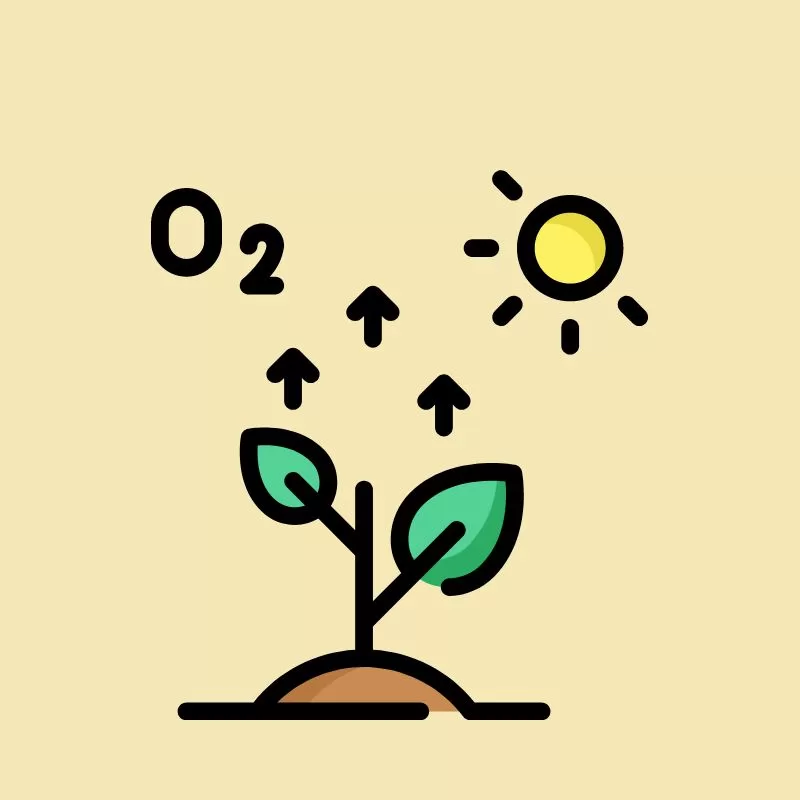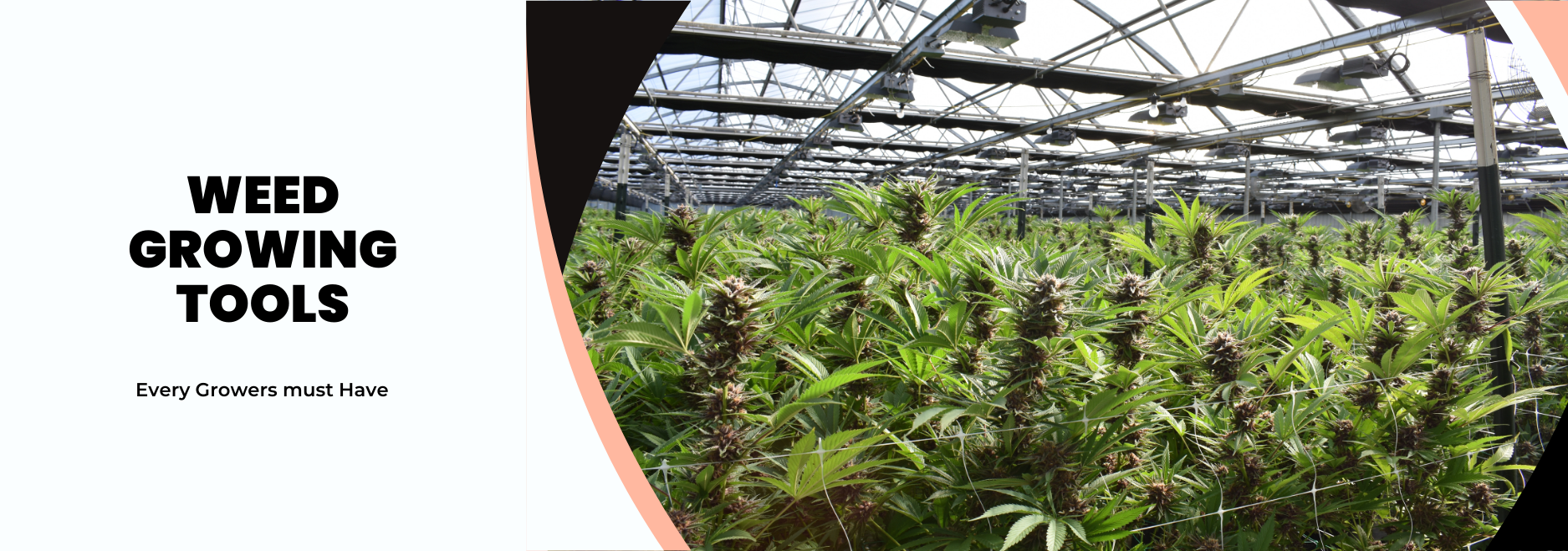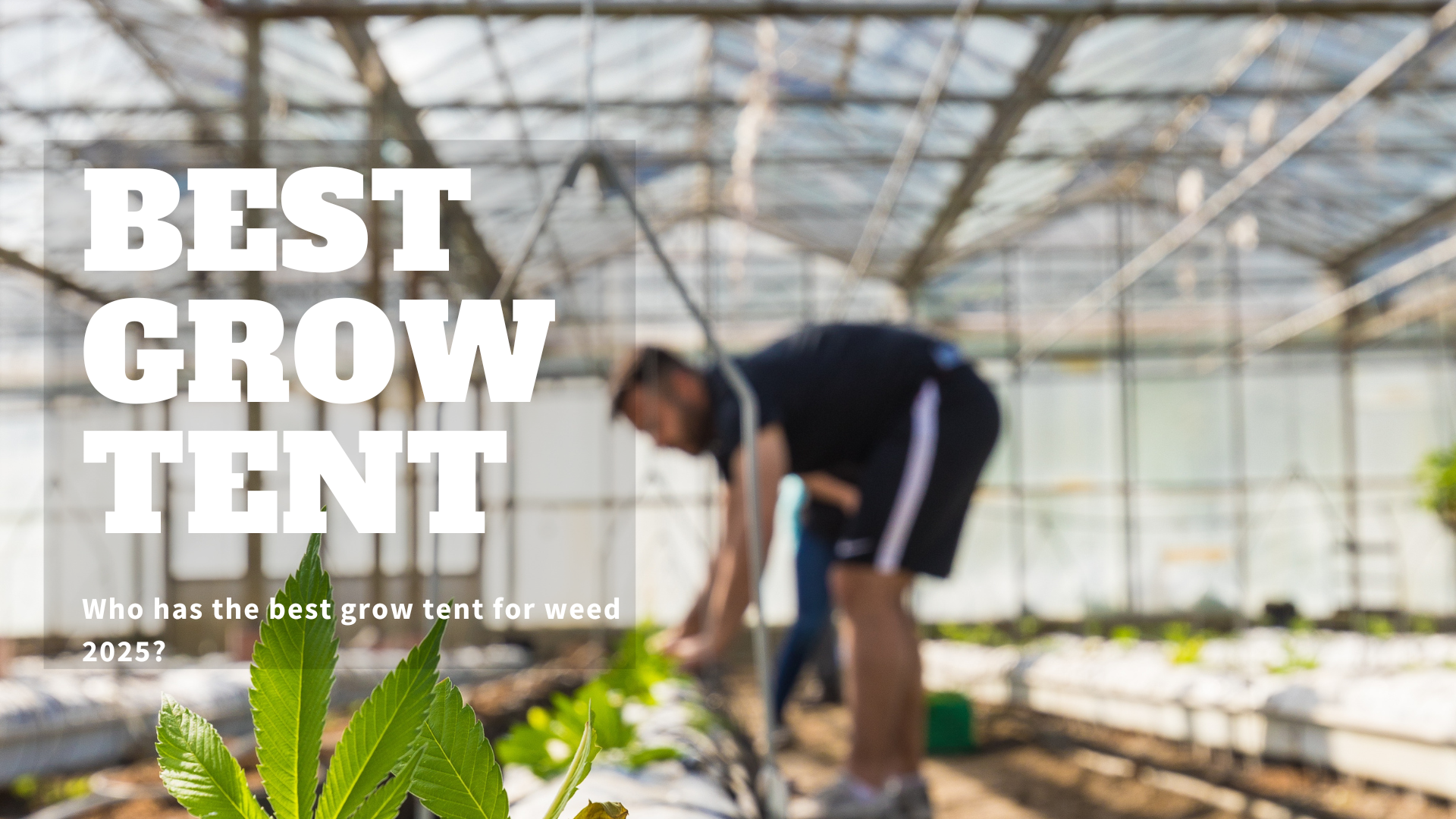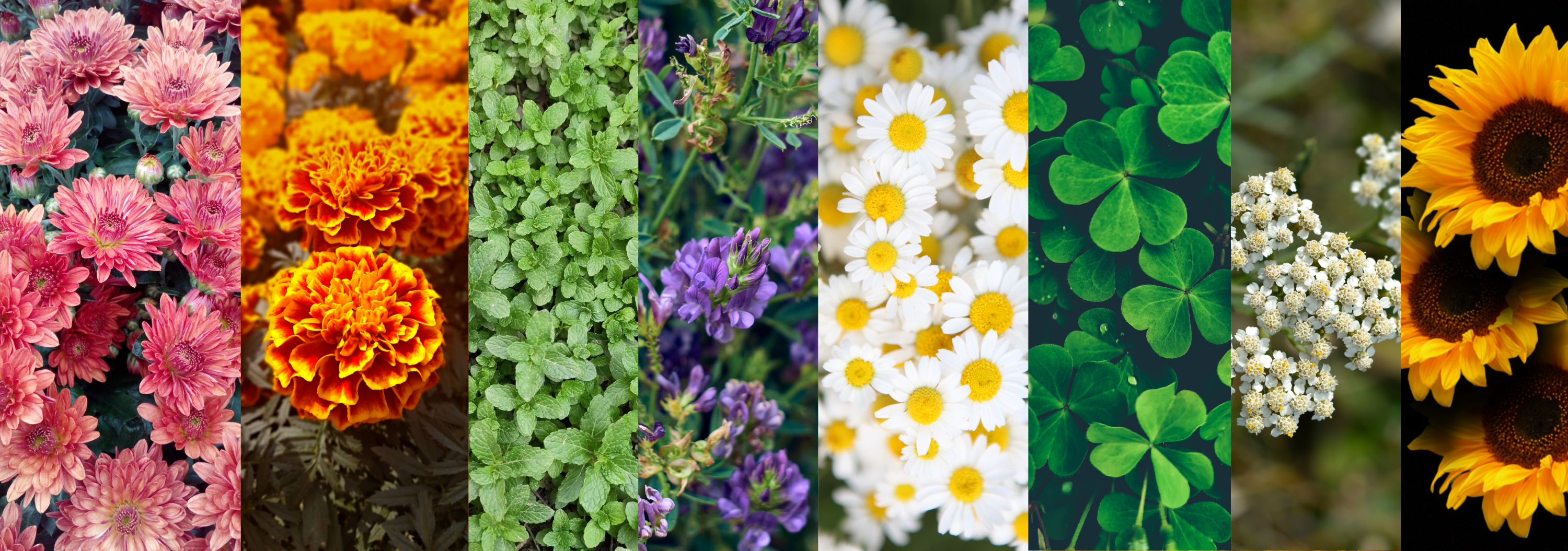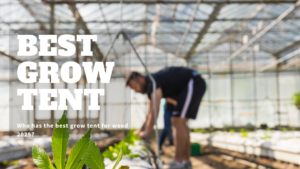Chlorophyll in weed plays a pivotal role in harnessing the power of sunlight, converting it into the energy necessary for growth, health, and the development of essential compounds. As one of the primary photosynthetic pigments within cannabis plants, chlorophyll gives them their lush, verdant hue and drives the photosynthesis process – a fundamental biochemical pathway critical for plant vitality and cannabinoid synthesis.
As a cannabis grower, it is essential to understand how chlorophyll works with light to fuel photosynthesis and elucidate the intricate relationship between light exposure and cannabis plant productivity, thus highlighting its importance in natural and controlled growth environments.
Why? You gain insights into optimizing conditions for maximal photosynthesis rates, cannabinoid production, and overall plant health. This article provides valuable guidance for enhancing chlorophyll function in weed, aiming to improve yield and quality in cannabis cultivation.
Overview of Photosynthesis in Cannabis
Photosynthesis is how plants, including cannabis, convert light energy into chemical energy (glucose) to fuel their growth and development. It occurs in two main stages: the light-dependent reactions (where light energy is captured) and the light-independent reactions (Calvin cycle), where glucose is produced. By understanding this process, you can create optimal growing conditions for your cannabis plants.
- Light-dependent reactions: These reactions occur in the thylakoid membranes of the chloroplasts and require light to take place. When the pigment chlorophyll absorbs light, it excites electrons, which are transferred to a series of proteins known as the electron transport chain. This chain produces adenosine triphosphate (ATP) and nicotinamide adenine dinucleotide phosphate (NADPH), energy-rich molecules that will be used in the next stage of photosynthesis.
- Light-independent reactions (Calvin cycle): These reactions occur in the stroma of the chloroplasts and don’t require light directly. Instead, they rely on the ATP and NADPH produced during the light-dependent reactions. The Calvin cycle uses carbon dioxide from the atmosphere. It combines it with the energy from ATP and NADPH to create glucose, which serves as the plant’s primary source of energy and building blocks for growth and development.
Photosynthesis in cannabis, as in other plants, is essential for the plant’s growth, health, and development of cannabinoids, which are the compounds responsible for the plant’s medicinal and recreational properties. The unique ability of plants to live on light, with the addition of water and nutrients, underscores the significance of photosynthesis in the survival and productivity of cannabis.
Chlorophyll, which gives plants a green color, is pivotal in this process. It enables light absorption, particularly in the red and blue spectrum, which is critical for energy storage through photosynthesis. This highlights the importance of chlorophyll in weed for its aesthetic value and functional role in the plant’s ability to harness energy from light.
Basic Mechanism
The photosynthesis in cannabis occurs in the leaves, specifically within the mesophilic cells located just beneath the leaf surface. These cells are strategically positioned to capture the maximum amount of sunlight or artificial light provided by grow lights.
During the light-dependent reactions, light energy hits the leaves in the form of photons, interacting with chlorophyll molecules and triggering a series of reactions that result in energy storage in ATP and NADPH molecules.
The dark reactions occur following the light reactions, notably the Calvin cycle. This cycle uses the energy stored during the day (or light period) to convert CO2 into glucose.
That sugar is an energy source and a building block for larger carbohydrate molecules. This process is crucial for the plant’s ability to feed off light, making photosynthesis a continuous energy capture and conversion cycle that fuels cannabis growth and development.
Research has shown that elevated CO2 concentrations significantly stimulate net photosynthesis (PN), water use efficiency (WUE), and internal CO2 concentration (Ci) in cannabis while suppressing transpiration (E) and stomatal conductance (gs).
That response to increased CO2 levels and the higher WUE under elevated CO2 conditions due to decreased stomatal conductance suggests that cannabis is well-adapted to thrive under varying environmental conditions, including those expected with greenhouse effects 5.
Furthermore, the relationship between light intensity and CO2 concentration is crucial for optimizing photosynthesis in cannabis. At a light intensity of 600 mol (49,310 lux), photosynthesis rates increase with CO2 concentration up to 400 ppm, with diminishing returns observed as levels reach 600 ppm.
However, photosynthesis rates rise moderately up to 800 ppm of CO2, beyond which the benefits of increased CO2 concentration taper off. This indicates an optimal range of CO2 concentration for maximizing photosynthesis in cannabis, contingent upon sufficient light intensity 6.
Role of Chlorophyll in Weed
Chlorophyll is the green pigment pivotal in photosynthesis, absorbing sunlight to produce sugar from carbon dioxide and water in plants. This process is essential for the survival of photosynthetic organisms, including plants and algae, which form the base of the food chain and are crucial for producing most of the atmosphere’s oxygen.
Specifically, chlorophyll is necessary for trapping high light intensity, capturing red and blue light, and facilitating plant growth and oxygen release. The presence of chlorophyll in weed is indicated by the green coloration of plants due to its ability to absorb and reflect light, making it abundantly present in cannabis.
Types of Chlorophyll
Five main types of chlorophylls are identified: chlorophylls a, b, c, d, and a related molecule found in prokaryotes known as bacteriochlorophyll. Among these, chlorophyll a and b are the primary photosynthetic pigments in plants, playing a significant role in light absorption.
Chlorophyll molecules consist of a hydrophobic tail that inserts into the thylakoid membrane and a porphyrin ring head, which absorbs light. This structure is crucial for the light-dependent reactions of photosynthesis, where chlorophyll a uniquely converts light energy to chemical energy 15.
The presence of chlorophyll a in all photosynthetic plants, algae, and certain cyanobacteria, and chlorophyll b in plants and green algae, underscores their importance in the photosynthetic process.
Light Absorption Processes
Chlorophyll’s ability to absorb light energy of red and blue wavelengths while reflecting green light gives leaves their green appearance 12. This absorption is critical for photosynthesis, enabling plants to convert light into chemical energy.
In weed, chlorophyll plays several vital roles, including capturing sunlight for photosynthesis, giving leaves their characteristic green color by absorbing specific light wavelengths, and aiding in nutrient absorption essential for plant growth.
The process of photosynthesis, primarily driven by chlorophyll within the chloroplasts of plant cells, allows for the synthesis of glucose and oxygen from light energy.
Without chlorophyll, plants would be incapable of producing the energy-rich molecules necessary for their growth and survival.
Adequate levels of chlorophyll are vital for ensuring robust plant growth and optimizing the plant’s metabolic processes, including nutrient absorption, enzyme production, and hormone regulation in cannabis cultivation.
Chlorophyll’s role in absorbing light and converting it into chemical energy, along with its presence in various forms within the plant, highlights its critical function in the photosynthesis process.
The types of chlorophyll and their specific light absorption processes contribute to the plant’s growth and health and play a significant role in the overall productivity and efficiency of photosynthesis in cannabis cultivation.
Light Reactions in Photosynthesis
How Light Reactions Work
Light reactions in photosynthesis are a fundamental process in which light energy is converted into chemical energy in the form of ATP and NADPH. This process occurs within the thylakoid membranes of chloroplasts, specialized organelles dedicated to photosynthesis in plants 18.
The light reactions involve two main photosystems, photosystem I (PSI) and photosystem II (PSII), which contain arrays of pigments optimized to harvest light. These photosystems play a crucial role in light-dependent reactions by absorbing light energy and using it to drive the synthesis of energy carrier molecules.
When pigments absorb light in PSII, the energy is transferred to the reaction center, boosting an electron to a high energy level. This electron is then passed to an acceptor molecule, leading to water molecules splitting and releasing oxygen.
The high-energy electron travels through an electron transport chain, powering the production of ATP and transferring to PSI, which is further energized by light absorption. Ultimately, the electron is used to reduce NADP+ to NADPH.
The interplay between PSI and PSII, the movement of electrons, and the synthesis of ATP and NADPH are central to the light reactions of photosynthesis.
Impact on Energy Production
The light reactions of photosynthesis directly impact energy production within the cannabis plant. By converting light energy into chemical energy, these reactions provide the necessary ATP and NADPH for the Calvin cycle, where sugars are synthesized.
The efficiency of light reactions is influenced by several factors, including light intensity, quality, and photoperiods.
Research has shown that cannabis plants are adapted to high irradiance levels and that the highest photosynthetic efficiency is achieved under specific conditions of light intensity and temperature 19.
However, it is also noted that higher photosynthesis rates do not automatically translate into higher flower yields.
Environmental stressors such as short-wavelength irradiation and high photon flux can impact the plant’s photosynthetic reactions, with cannabinoids like THC, CBD, and CBG playing a role in the plant’s defense mechanisms.
Controlled environment agriculture (CEA) allows for optimizing environmental factors, including light intensity and spectrum, to enhance photosynthetic efficiency and plant growth.
Studies have demonstrated that altering light quality can manipulate plant growth, morphology, and metabolism, with specific light spectra inducing changes in plant structure and chemistry.
For instance, blue light has been shown to decrease internode length and make plants more compact, while red and blue light spectrums generally result in a more compact morphology than white light sources.
The light reactions in photosynthesis are thus integral to energy production in cannabis, affecting plant growth, development, and cannabinoid synthesis. Through understanding and optimizing the conditions for these reactions, cannabis cultivators can potentially enhance plant productivity and quality.
Dark Reactions and the Calvin Cycle
What is the Calvin Cycle?
The Calvin cycle, also known as the light-independent reactions, plays a crucial role in photosynthesis, converting carbon dioxide into organic compounds like glucose.
Named after Melvin Calvin, who detailed this process in the 1950s, the cycle occurs in the stroma of the chloroplast and is essential for the synthesis of organic compounds.
Although not directly dependent on light, the Calvin cycle relies on ATP and NADPH produced during the light reactions, highlighting its indirect dependence on light for energy.
Stages of the Dark Reactions
- Carbon Fixation
- The initial stage involves the enzyme ribulose-1,5-bisphosphate carboxylase/oxygenase, commonly known as RuBisCO, which catalyzes the addition of carbon dioxide to ribulose-1,5-bisphosphate (RuBP). This reaction produces two molecules of 3-phosphoglycerate (3-PGA), marking the beginning of the carbon fixation process.
- Reduction
- Following carbon fixation, the 3-PGA molecules undergo a reduction phase. Each 3-PGA molecule first gains a phosphate group from ATP, transforming ATP to ADP. Subsequently, NADPH reduces the phosphorylated molecule, releasing a phosphate group and converting it into glyceraldehyde-3-phosphate (G3P), a three-carbon sugar. This stage is crucial for converting the fixed carbon into a form that can synthesize glucose and other organic compounds.
- Regeneration of RuBP
- The final stage involves the regeneration of RuBP, the molecule that initiates the cycle. For every three turns of the cycle, one molecule of G3P exits the cycle to contribute towards glucose synthesis, while the remaining G3P molecules are recycled to regenerate RuBP. This regeneration is vital for the cycle’s continuity, allowing more carbon dioxide to be fixed and processed.
The Calvin cycle’s efficiency is indirectly influenced by light, as the enzymes involved in the cycle, such as RuBisCO, require activation that can only be achieved in the presence of light.
Despite being termed “dark reactions,” these processes run concurrently with light reactions during photosynthesis, underscoring the interconnected nature of these stages in the photosynthetic process.
Light Requirements for Cannabis Cultivation
Indoor vs. Outdoor Light Needs
Cannabis cultivation can be broadly categorized into indoor and outdoor growing, each with distinct light requirements crucial for the plant’s development and cannabinoid production. Indoor cultivation offers the advantage of precise light, temperature, humidity, and nutrient control, leading to consistent and predictable growing conditions.
Artificial lighting sources such as LED (light-emitting diode), HID (high-intensity discharge), and CFL (compact fluorescent lamps) are employed to provide the optimal spectrum and intensity tailored to each growth stage. This controlled environment allows for manipulating the light cycle, influencing the plant’s flowering time, yield, and potency.
Conversely, outdoor cultivation relies on natural sunlight, which, while free and abundant, presents variability based on season, latitude, weather, and time of day. Despite the less controllable nature of outdoor light, it encompasses a full spectrum that can enhance specific plant characteristics, including the terpene profile and flavor of the buds.
However, outdoor plants are subject to elements that can impact trichome development and overall plant health. Notably, studies have shown that outdoor cultivation under the sun can result in a higher overall cannabinoid profile and a more robust terpene presence compared to indoor-grown plants, underscoring the sun’s potential to unlock the plant’s medicinal power.
Optimal Light Cycles
The light cycle, or the rotation of light and darkness a cannabis plant receives daily, is pivotal in guiding the plant through its growth stages. During the vegetative stage, a common practice is maintaining an 18/6 light cycle, providing 18 hours of light and six hours of darkness. This cycle supports healthy plant growth and optimizes energy consumption.
A 12/12 light cycle is typically adopted to induce bud formation and maturation when transitioning to the flowering stage. The reduction in light hours signals the plant to shift from vegetative growth to bud production, stimulating the synthesis of essential oils and terpenes.
For indoor cultivation, growers can adjust the light cycle, with at least an 18/6 schedule recommended during the vegetative stage and a switch to 12/12 during flowering.
Some growers experiment with 20/4 or 22/2 cycles for vegetative growth, although a 24/0 cycle is generally discouraged due to potential impacts on yield and plant health.
It’s important to note that autoflowering strains may have different light requirements, and specific strains may possess unique optimal light cycles based on their genetic makeup and growing conditions.
The light cycle’s impact extends beyond the vegetative and flowering stages. During the vegetative stage, longer light exposure promotes vigorous growth, enhancing the development of leaves, branches, and root systems.
In the flowering stage, the 12/12 cycle is crucial for initiating bud growth and achieving optimal harvest timing.
Proper light management throughout these stages ensures the development of dense, resinous buds and a high-quality yield, reflecting the desired cannabinoid profiles.
Role of Photosynthesis in Cannabinoid Production
Photosynthesis and Cannabinoid Synthesis
Light is the foundational energy source for plant growth and development, with photosynthesis harnessing this energy. Light’s quality, intensity, composition, duration, and direction are critical in this process.
Stomatal behavior, which influences the diffusion of water vapor and the uptake of carbon dioxide, is affected by various factors, including light, CO2 concentration, and temperature, thereby impacting photosynthesis. Studies have indicated that light intensity can enhance stomatal conductance, though insufficient and excessive light may decrease the photosynthetic rate and stomatal conductance.
The chlorophyll content is directly linked to the photosynthetic rate, with any alterations in chlorophyll levels affecting this rate. In the presence of light, chloroplasts and peroxisomes become primary producers of reactive oxygen species (ROS), with thylakoids within chloroplasts facilitating light-dependent photosynthesis reactions.
Over-saturation of light energy can lead to photoinhibition, impairing photochemical activity in PS II and leading to ROS generation, which plays a role in plant stress responses.
Cannabinoids, synthesized in glandular trichomes of cannabis plants, are believed to offer UV protection, with increased THC concentrations observed in plants grown under supplemental UV-B radiation 36. This suggests a protective role of cannabinoids against environmental stress, including UV exposure.
Light Spectrum
Different colors of light within the Photosynthetically Active Radiation (PAR) range (400-700 nm) have varying effects on cannabis growth. Blue light (400-500 nm) promotes vegetative growth, while red light (600-700 nm) stimulates flowering and fruiting. Balancing the light spectrum ensures your cannabis plants get the right amount of energy at each growth stage.
Light Intensity
Photosynthesis Light intensity is crucial for maximizing photosynthesis in cannabis plants. Measured in Photosynthetic Photon Flux Density (PPFD), the optimal range for cannabis growth is 600-1,000 µmol/m²/s during the vegetative stage and 900-1,500 µmol/m²/s during flowering. By providing adequate light intensity, you can ensure your plants have the energy they need to thrive.
Studies on Lighting Types and Cannabinoids
Cannabis plants are adapted to high irradiance levels and warm temperatures, with optimal photosynthetic efficiency observed under specific PPFD and temperature ranges. However, higher photosynthesis rates do not necessarily equate to higher flower yields.
Light quality, intensity, and photoperiod significantly influence growth protocols, with plant metabolism being impacted by the light spectrum and irradiance levels.
Plants receive light signals through various photoreceptors, with phytochromes, cryptochromes, phototropins, and UVR8 playing significant roles in plant responses to light.
Short wavelength irradiation enhances plant defense mechanisms by inducing metabolic activities such as phenolic compound synthesis. Cannabinoids like THC, CBD, and CBG, which possess antioxidant properties, are considered part of the plant’s defense mechanism.
While light quality impacts cannabinoid synthesis, cannabis yields are more closely correlated with light intensity. Studies have shown that THC concentrations in flowers may be more closely linked to cannabis variety rather than cultivation method, with increasing irradiance levels positively correlating with flower dry weight and total cannabinoid yield in high irradiance treatments.
An optimized light spectrum can improve the value and quality of cannabis, with current LED technology showing significant differences in growth habits and cannabinoid profiles compared to traditional HPS light sources 37.
Research focusing on cannabis lighting aims to increase yield and maximize cannabinoid and terpene content, with mixed results regarding the impact of light spectrum on chemical content.
Higher light intensities have been shown to produce higher yields up to a certain threshold, but cannabinoid levels do not respond similarly.
UVB radiation, around 300 nanometers, has been particularly interesting due to its potential to increase THC concentration, although modern findings have been mixed.
Factors such as timing, varied genetics, different light spectrums, and intensities could increase cannabinoids and terpenes, highlighting the complexity of optimizing lighting for cannabinoid production.
Impact of Environmental Factors
Environmental factors significantly influence the growth and development of cannabis plants, with temperature, humidity, and CO2 levels playing pivotal roles. These factors affect the plant’s physiological processes and its chemical composition, impacting overall plant health and yield.
Temperature and Humidity
- Optimal Temperature for Photosynthesis: Research indicates that the optimal temperature for photosynthesis in cannabis varies among strains. For example, high potency Mexican (HPM) varieties exhibit optimal photosynthesis at temperatures ranging from 30–35°C, while other strains like W1 prefer a slightly cooler range of 25–30°C. Fiber-type varieties such as Zolo 11 and Zolo 15 show optimal photosynthesis at around 30°C, underscoring the importance of strain-specific temperature requirements for maximizing photosynthetic efficiency.
- Impact of Temperature on Gas Exchange: Temperature significantly affects gas and water vapor exchange characteristics in cannabis. Varieties with higher maximum photosynthesis rates also tend to have higher chlorophyll content, suggesting a direct correlation between temperature, photosynthesis, and chlorophyll levels 40. Furthermore, temperature influences water use efficiency (WUE), with differences becoming less pronounced at higher temperatures.
- Temperature and Respiration Rates: A notable increase in dark respiration rates was observed with rising temperatures, indicating a strong association between photosynthetic and respiratory rates. This relationship highlights the delicate balance required to maintain optimal growth conditions, particularly in controlled environments.
CO2 Levels
- Elevated CO2 and Photosynthesis: Increasing atmospheric CO2 levels have significantly stimulated net photosynthesis, water use efficiency, and internal CO2 concentration in cannabis while reducing transpiration and stomatal conductance. This suggests that cannabis is well-adapted to thrive under conditions of elevated CO2, potentially benefiting from the anticipated increase in atmospheric CO2 levels due to global warming.
- CO2 Enrichment Systems: Implementing CO2 enrichment systems in cannabis cultivation can enhance photosynthesis, improve growth rates, larger leaf surfaces, and increase biomass production. Moreover, CO2 enrichment has been linked to larger flowers, higher bud density, and enhanced flower production, contributing to higher yields and more significant harvest quantities.
- Quality Attributes and CO2 Levels: Beyond yield, CO2 enrichment also positively impacts the quality attributes of cannabis plants. Increased CO2 availability promotes allocating more resources towards secondary metabolites, such as cannabinoids and terpenes, enhancing the potency and aromatic profiles of cannabis strains. This underscores the potential of CO2 enrichment to increase yield and improve the quality of cannabis products.
- Environmental Controls and CO2: Integrating CO2 enrichment systems with environmental controls allows growers to maintain precise CO2 concentrations tailored to the specific growth stage of the plants. This level of control ensures consistent and optimal conditions for cannabis cultivation, leading to more predictable and successful crops.
Understanding and optimizing environmental factors such as temperature, humidity, and CO2 levels are crucial for maximizing the growth, yield, and quality of cannabis plants.
Tailoring these conditions to the specific needs of different cannabis strains can significantly enhance photosynthetic efficiency and overall plant health, contributing to successful cultivation outcomes.
Choosing the Right Lighting for Indoor Growth
LED vs. HPS
When selecting the appropriate lighting for indoor cannabis cultivation, growers often face the decision between LED (Light Emitting Diode) and HPS (High-Pressure Sodium) lights. This choice can significantly influence their operation’s efficiency, cost, and yield.
- LED Grow Lights offer several advantages over their HPS counterparts. They are more energy-efficient, resulting in lower utility costs over time. Additionally, LEDs emit less heat, reducing the need for extensive cooling systems and allowing for closer proximity to plants without the risk of heat damage. With a lifespan exceeding 50,000 hours, LEDs surpass HPS bulbs in durability and longevity, offering long-term savings despite their higher initial cost. Furthermore, LED lights can provide a fuller spectrum of energy, accommodating the entire grow and bloom phases without switching lighting systems.
- HPS Grow Lights, on the other hand, have been the traditional choice for indoor cannabis cultivation due to their ability to produce a significant amount of light, which is particularly beneficial during the flowering stage. HPS lights are initially cheaper to install, making them an attractive option for growers with limited upfront investment capacity. However, they are less energy-efficient, generate considerable heat requiring additional ventilation, and have a shorter lifespan than LED lights, increasing long-term operational costs.
Balancing Costs and Yields
Optimizing indoor cannabis cultivation involves more than just selecting the right type of lighting; it also requires careful consideration of the lighting schedule, intensity, and spectrum to maximize yields while minimizing costs.
- Optimizing Lighting Schedules: Cannabis plants require different amounts of light depending on their stage in the growth cycle. Most varieties need about 12-18 hours of light per day during the vegetative phase and about 12 hours during the flowering stage. Adjusting lighting schedules, such as employing an 18/6 light-to-dark ratio during the vegetative phase, can increase yields and decrease costs. Indoor growers have the flexibility to adjust schedules to avoid peak electricity usage times, further saving costs.
- Adjusting Light Intensity and Spectrum: The intensity and spectrum of light should be controlled throughout the plant’s lifecycle to prevent issues such as overstretching in young plants and to promote robust vegetative growth followed by successful flowering. LED lights offer the advantage of adjusting both intensity and spectrum, with options to include UV or far-red spectrum lights to mimic natural daylight cycles more closely. This level of control can improve plant health and yield quality.
- Cost Considerations: LED lights have a higher upfront cost. However, their energy efficiency and longer lifespan can lead to significant savings, making them a more sustainable option for severe cultivators. The ability to control the light spectrum and intensity also contributes to optimizing plant growth and yield, potentially offsetting the initial investment in LED technology.
Choosing the proper lighting for indoor cannabis growth involves a detailed analysis of the advantages and disadvantages of LED vs. HPS lights, along with strategic planning of lighting schedules, intensity, and spectrum to balance operational costs against yield outcomes.
By making informed decisions in these areas, growers can enhance the efficiency and profitability of their indoor cultivation operations.
Conclusion
Achieving the best outcomes in cannabis cultivation requires a nuanced understanding of the plant’s photosynthetic process and the ability to tailor environmental conditions accordingly. By focusing on manipulable factors such as lighting type, CO2 enrichment, and controlled temperature, cultivators can significantly impact their plant’s efficiency in photosynthesis, leading to healthier plants and more bountiful yields.
Though the science of photosynthesis in cannabis is complex, the rewards of mastering it are profound, presenting a pathway to superior cultivation practices that promise to elevate the standard of cannabis production.
FAQs
How does photosynthesis occur in cannabis plants?
Cannabis plants undergo photosynthesis much like any other green plant. They use chlorophyll, found in structures called chloroplasts, to capture sunlight. This light energy is then converted into chemical energy by combining CO2 (carbon dioxide) and H2O (water) to produce carbohydrates (sugars) which fuel the plant’s growth.
Is photosynthesis a process that cannabis can perform?
Yes, cannabis plants are capable of photosynthesis. They utilize light energy, carbon dioxide, and water to create a biochemical form of energy. For optimal photosynthesis in cannabis, providing light, water, and carbon dioxide in the right amounts and at the appropriate times is crucial.
What is the duration for chlorophyll to decompose in cannabis?
The breakdown of chlorophyll and sugars in cannabis is a gradual process that occurs during curing, which typically ranges from three to eight weeks. However, some cultivators may extend the curing period to over six months to ensure a slow, even breakdown without harming the terpenes.
Why is chlorophyll vital for the growth of plants?
Chlorophyll plays a crucial role in plant development as it is the pigment responsible for absorbing sunlight during photosynthesis. Found in the chloroplasts of plant cells, chlorophyll captures solar energy and converts it into chemical energy, which serves as food for the plant.

